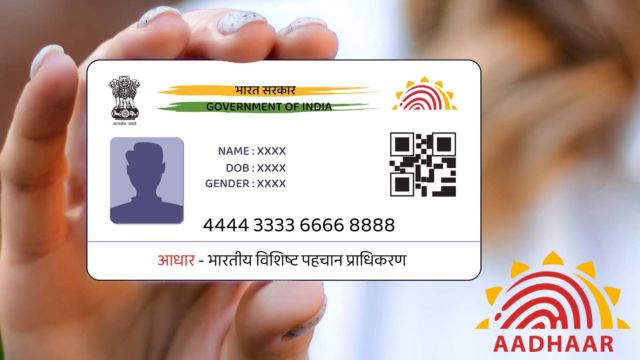Aadhaar Card for NRIs: How to apply, documents required, latest updates and more
Aadhaar Card for NRI with Indian Passport: UIDAI introduced new rules for obtaining the Aadhaar card for the NRIs, making them eligible to apply for it at any Aadhaar Kendra. Here's all you need to know, from the application process to the documents required, the latest updates, and more.
 NRI Aadhaar Enrollment: Here's all you need to know, from the application process to the documents required, the latest updates, and more.
NRI Aadhaar Enrollment: Here's all you need to know, from the application process to the documents required, the latest updates, and more. Aadhaar Card for NRIs: Issued by the Unique Identification Authority of India (UIDAI), the Aadhar is a unique 12-digit number crucial to proving identity, age, and address in India. Even non-resident Indians (NRIs) can apply for an Aadhaar card, although it may not be necessary while residing outside India.
However, having an Aadhaar can be beneficial if there are plans to return to India or stay in the country for an extended period, from opening bank accounts to renting properties, government official processes, and more.
Initially, as per the Aadhaar Act of 2016, every Indian resident is eligible to get an Aadhaar card. A resident, as per the Aadhar Act, is an individual living in India for 182 days or more in the preceding 12 months.
Nonetheless, in the new Aadhaar Act in July 2019, the Unique Identification Authority of India (UIDAI) would issue Aadhaar cards on arrival to NRIs with Indian passports, thus removing the mandatory waiting period of 182 days, ensuring quicker processing and ease of obtaining Aadhaar for NRIs visiting India.
Furthermore, on January 16, 2024, the UIDAI introduced new rules outlining different forms for enrolling in Aadhaar and updating them for resident and non-resident Indians.
It made NRIs eligible to apply for an Aadhaar card at any Aadhaar Kendra and update information in the Central Identities Data Repository (CIDR) by visiting the enrollment centre. The new updates have, therefore, streamlined and simplified the process for NRIs to obtain an Aadhaar card.
Here is a step-by-step guide on how NRIs can obtain an Aadhaar card in India. One needs to follow this to obtain an Aadhaar card as an NRI.
Revised forms:
The revised forms for Aadhaar enrollment and updates now cater to residents and non-resident Indians (NRIs) separately, based on age groups. Here is an overview of the updated forms:
I. Form 1: Aadhaar Enrollment and Update:
- Suitable for individuals aged 18 years and above, both residents and NRIs with Indian address proof.
- This form serves for both initial Aadhaar enrollment and subsequent updates.
II. Form 2: For NRIs:
- Specifically designed for NRIs with proof of address outside India, it enables enrollment and updates.
III. Forms 3 to 6: For Children:
- Form 3: For children aged 5 to under 18 years, residents or NRIs with an Indian address proof.
- Form 4: For NRI children in the same age group without Indian address proof.
- Form 5: For resident Indian children below five years with an Indian address proof.
- Form 6: For NRI children below five years with foreign address proof.
IV. Form 7: For Resident Foreign Nationals:
- Applicable to foreign nationals above 18 years old, requiring a foreign passport, an OCI card, a valid long-term Indian visa, and an email ID for enrollment and updates.
V. Form 8: For Minor Resident Foreign Nationals:
- Designed for foreign nationals under 18 years for Aadhaar enrollment and details update.
VI. Form 9: Aadhaar Cancellation:
- Intended for individuals attaining the age of 18 to cancel their Aadhaar number.
Eligibility and Document Requirements:
An NRI (whether minor or adult) is eligible to apply for an Aadhaar card from any Aadhaar Kendra in India, and they must have a valid Indian passport, as it is required for all NRIs for proof of identity and address.
They can now apply using revised Form 1 for adults and Forms 3-6 for children, depending on their age and residency status. Form 7 is for foreign nationals over 18 with necessary visas, and Form 8 is for those under 18, requiring guardian consent.
- In addition to the Indian passport, for NRIs born on or after October 1, 2023, a birth certificate has now become mandatory.
- For minors, one of the parents or guardians has to authenticate on behalf of the child and also give consent for the minor’s enrollment by signing the enrollment form.
- An email address must be provided for communication, as SMS will not be sent to non-Indian numbers.
Refer to this official document by UIDAI, which entails a list of all approved documents: https://uidai.gov.in/images/commdoc/valid_documents_list.pdf
Application Process:
To obtain an Aadhaar Card, one must follow a specific procedure that involves visiting an Aadhaar enrollment centre, as the service is not available online for NRIs. Here is a detailed guide on how NRIs can apply for an Aadhaar card:
Step 1: Booking an Appointment
- Visit the official UIDAI portal and navigate to the ‘Book an Appointment’ section.
- Select your city or location at a UIDAI-run or registrar-run Aadhaar Seva Kendra.
- Choose the option for ‘Non-Resident Indian’ and provide your email ID and captcha for booking.
Step 2: Providing the Necessary Documents
- On the appointment day, bring all required documents in their originals and copies for verification.
- Essential documents include a valid Indian passport, photo ID proof (like a passport, voter card, or PAN card), address proof (passport or utility bill), date of birth proof (birth certificate (mandatory for the ones born on or after October 1, 2023; 10th-grade mark sheet), documents proving non-resident status, and, if applicable, proof of identity for minors.
Step 3: Biometric Data Collection
- Upon document submission, UIDAI officials will verify them and collect biometric data.
- Biometrics include scanning all ten fingers, iris scans, and capturing a photograph for the Aadhaar Card.
- The collected data is entered into the system to generate a unique 12-digit Aadhaar number.
- The Aadhaar card will be dispatched to your address within 90 days.
Considerations to keep in mind:
- Aadhaar is not mandatory for NRIs, but it can facilitate various processes in India.
- Aadhaar signifies identity, not citizenship; possessing it does not grant residency rights.
- In transactions, e-Aadhar or mAadhar can be used if the original card is unavailable.
- Officials may conduct further verification during transactions despite having an Aadhaar Card.
By following these steps and adhering to the document requirements, NRIs can successfully apply for an Aadhaar Card to streamline various processes in India.





- 01
- 02
- 03
- 04
- 05


























